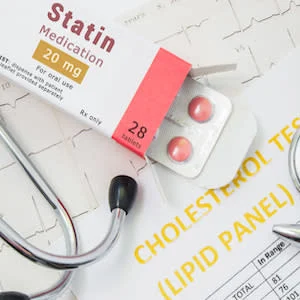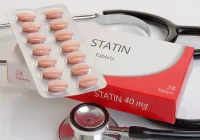Lipid-lowering therapy is an effective strategy to reduce cardiovascular mobility and mortality. There is sufficient clinical evidence to demonstrate the clinical benefits of low-density lipoprotein cholesterol (LDL-C) reduction. LDL-C reductions have been seen with the use of statins, ezetimibe, and proprotein convertase subtilisin/kexin type 9 inhibitors (PCSK9i).
Clinical guidelines for patients with atherosclerotic cardiovascular disease (ASCVD) recommend intensive statin therapy while adding non-statin therapy if low-density lipoprotein cholesterol (LDL-C) is high. However, compliance with these guidelines is fairly low.
The Getting to an Improved Understanding of Low-Density Lipoprotein Cholesterol and Dyslipidemia Management (GOULD) study is a prospective observational study that tracked lipid-lowering therapies for patients with ASCVD with baseline LDL-C of 70 mg/dL or more or those who were taking a proprotein convertase subtilisin/kexin type 9 inhibitor.
A total of 5006 patients were enrolled in 1 of 3 cohorts - those currently receiving proprotein convertase subtilisin/kexin type 9 inhibitor (PCSK9i) and two groups of patients not receiving PCSK9i drugs, with LDL-C levels of 100 mg/dL or more (cohort 2) or those with LDL-C levels of 70 to 99 mg/d (cohort 3). The primary outcome of the study was a change in lipid-lowering therapy in two years. This included initiation or discontinuation of statin therapy, ezetimibe, or PCSK9i; increasing or decreasing the dosage of a statin or PCSK9i; switching to a different type of statin or PCSK9i; changes in other lipid-lowering therapies, and no changes in lipid-lowering therapy. Intensive lipid lowering therapy was defined as the use of either a high-intensity statin, statin plus ezetimibe, or PCSK9i
Results of the study show that at two years, 17.1% had lipid-lowering therapy intensification. In the cohorts with LDL-C levels of 100 mg/dL or more and 70 to 99 mg/dL, lipid-lowering therapy intensification occurred in 22.4% and 14.4%, respectively. In the PCSK9i cohort, 91.7% were still taking PCSK9i at two years.
Overall, findings show that over a 2-year period, there were only modest intensifications of lipid-lowering therapies, with only 1 in 3 patients achieving a low-density lipoprotein cholesterol level less than 70 mg/dL at two years. These findings suggest a need for further intensification of lipid-lowering therapy to achieve optimal cholesterol management in patients with ASCVD.
Source: JAMA Cardiology
Image Credit: iStock







